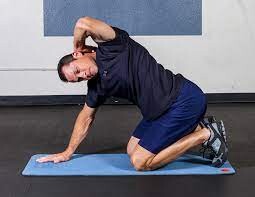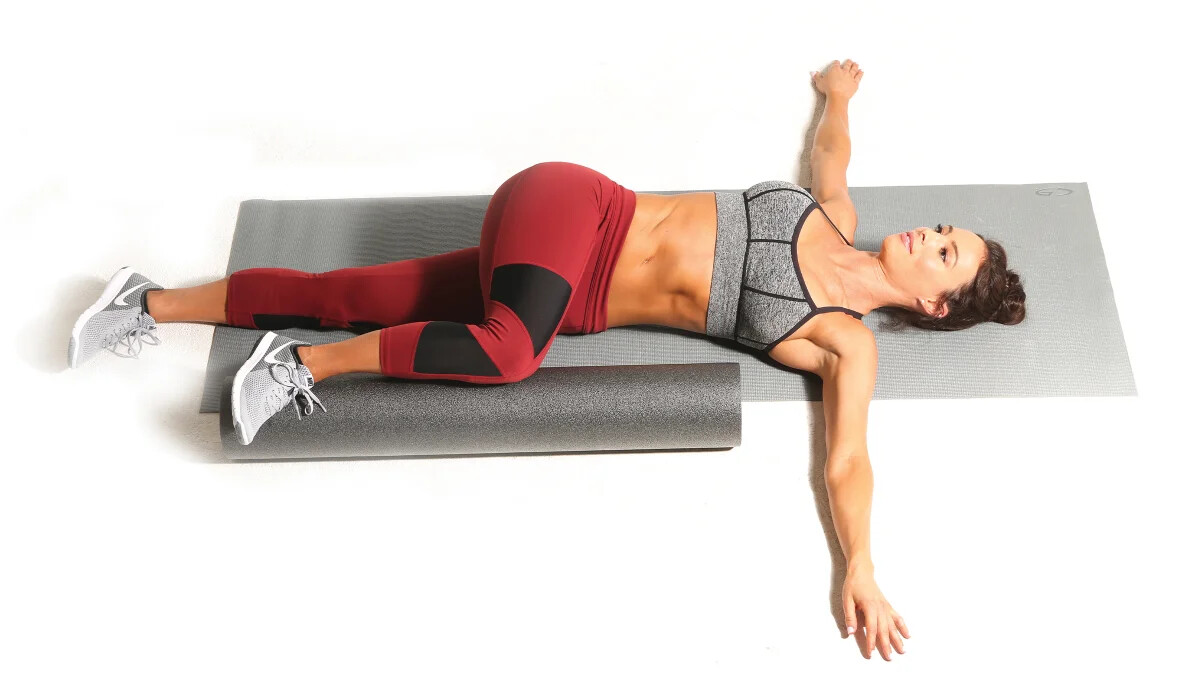Running News Daily
Running News Daily is edited by Bob Anderson. Send your news items to bob@mybestruns.com Advertising opportunities available. Train the Kenyan Way at KATA Kenya and Portugal owned and operated by Bob Anderson. Be sure to catch our movie A Long Run the movie KATA Running Camps and KATA Potato Farms - 31 now open in Kenya! https://kata.ke/
Index to Daily Posts · Sign Up For Updates · Run The World Feed
Four exercises to improve spine mobility
As a runner, you may not often think about your back, but neglecting this important part of your body not only puts you at greater risk for injuries but can reduce running efficiency and ultimately slow you down. If you haven’t given your back any attention lately, try adding these simple exercises to your routine once or twice a week and start reaping the benefits.
Thoracic spine mobility plays a crucial role in the overall performance and well-being of runners. The thoracic spine refers to the middle and upper back region, consisting of 12 vertebrae that connect the cervical spine (neck) and the lumbar spine (lower back). Maintaining mobility in this area is important for runners due to its impact on posture, breathing mechanics and overall movement efficiency.

To improve thoracic spine mobility, try doing the following exercises once or twice a week. If you frequently feel stiff through your back, neck and shoulders, consider booking an appointment with a chiropractor, who can provide a more in-depth assessment and help you regain mobility through your spine.
1.- Cat/cow stretch

Begin on your hands and knees. Inhale as you move your butt up towards the ceiling, pressing your hands into the floor, arching your back and pressing your chest toward the floor as you lift the head up (this is the cow). From there, exhale as you move into cat position, rounding out your back and pushing shoulder blades away from you as your spine forms a “C” curve in the opposite direction. Repeat this 10 times, focusing on keeping your should blades relaxed while breathing deeply and steadily.
2.- Quadruped t-spine rotation
Get on your hands and knees, with your spine in a neutral position. Place one hand on the back of your neck, without putting pressure or pulling down on your neck.
Leading with your eyes, begin to rotate your head and shoulder as far as possible down toward your opposite elbow. Reverse the motion (still leading with your eyes), by rotating your head and shoulder upward as far as possible without twisting your lower back. Move through this motion 10 times, then repeat on the other side.
3.- Open book
Start by lying on your left side, stacking your right leg on top of your left, with your knees bent. Extend your arms straight out in front of you, palms touching. Lift your right hand and extend it upward, opening up the arm like it’s a book. Slowly move your arm until it is extended straight out to your right with your palm up, resting on the floor. Follow the top hand with your head and eyes throughout the entire movement, so that your head and eyes are turned toward the right at the end of the movement. Hold this stretch for a few breaths before returning to the starting position with palms stacked on top of each other. Repeat up to 10 times on each side.
4.- Thoracic extension over foam roller
Place the foam roller perpendicular to your torso. Sit in front of the foam roller, and gently hold your head with your hands, interlocking the fingers and supporting the weight of your head (you should simply be holding your head, not pulling on it).
Take a deep breath, then as you breathe out slowly lean backward so that your upper back is reaching back over the foam roller. Allow your shoulders to reach gently toward the floor while the foam roller supports your upper back. Lift the hips to roll up and down the muscles of the upper back. Return to the starting position, and move the foam roller up an inch and repeat the process, moving up your spine after each stretch. This is a very intense movement, so don’t force your body into discomfort. Stretch only as far as your body allows while you continue to breathe steadily. If you find yourself holding your breath, you’re probably pushing too hard and should ease up until you can return to regular breath.
by Brittany Hambleton
Login to leave a comment




